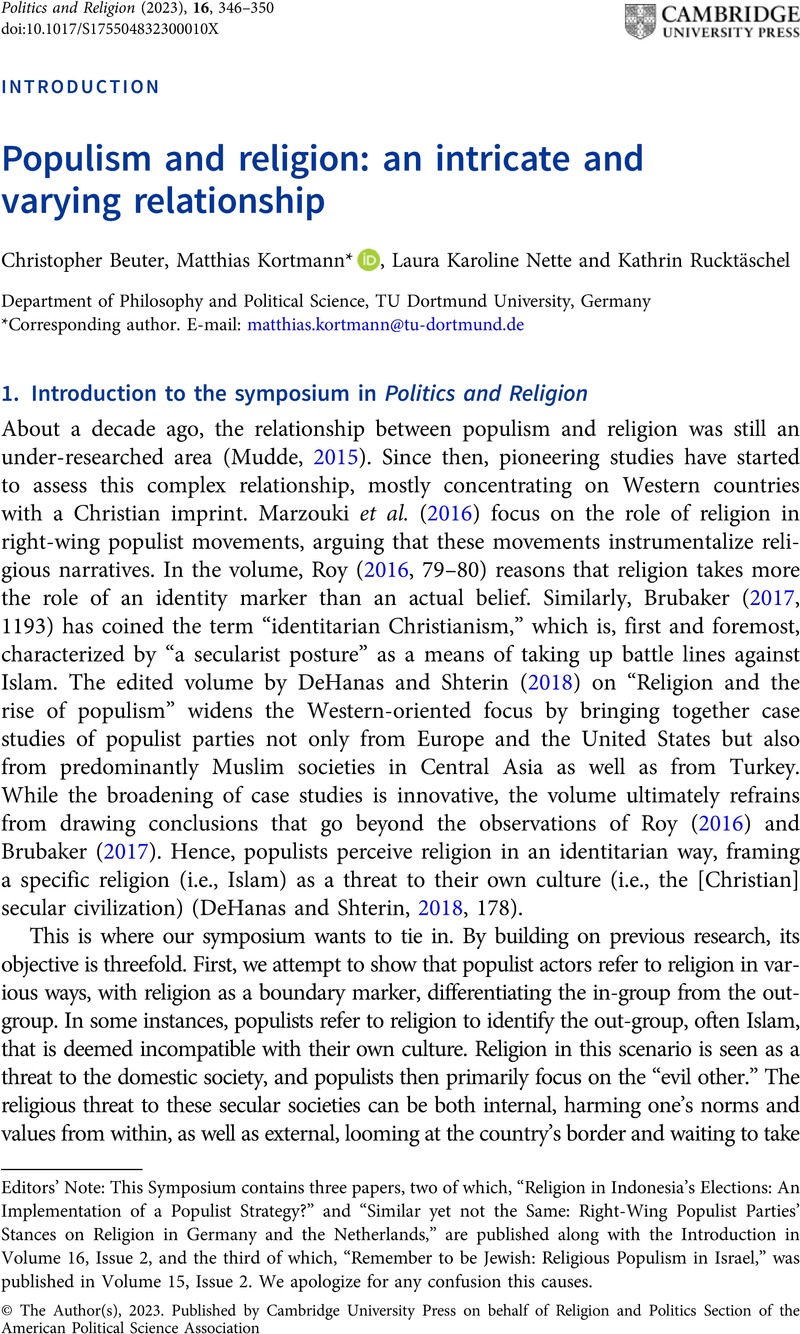Article contents
Populism and religion: an intricate and varying relationship
Published online by Cambridge University Press: 07 June 2023
Abstract

- Type
- Introduction
- Information
- Copyright
- Copyright © The Author(s), 2023. Published by Cambridge University Press on behalf of Religion and Politics Section of the American Political Science Association
Footnotes
Editors' Note: This Symposium contains three papers, two of which, “Religion in Indonesia's Elections: An Implementation of a Populist Strategy?” and “Similar yet not the Same: Right-Wing Populist Parties' Stances on Religion in Germany and the Netherlands,” are published along with the Introduction in Volume 16, Issue 2, and the third of which, “Remember to be Jewish: Religious Populism in Israel,” was published in Volume 15, Issue 2. We apologize for any confusion this causes.
References
References
- 3
- Cited by


